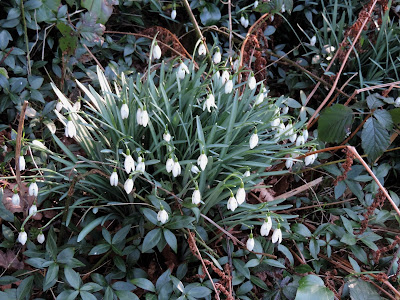Just outside our window were the skeletal remains of a Deptford pink (Dianthus armeria) with each grey brown shuttlecock of seed head delicately holding up a small ball of snow like a supplicant making an offering. This pink has been surviving as a self sown annual in our garden for maybe 30 years and needs no looking after. It often seeds itself into pots of other plants where it can be left as its slender shoots do not mask the main attraction. Then, in summer, it produces a sequence of small dark pink flowers.
There is a fine appreciation of this modest native flower by Andy Byfield here: https://www.theguardian.com/lifeandstyle/2012/jun/21/deptford-pink-plantlife









